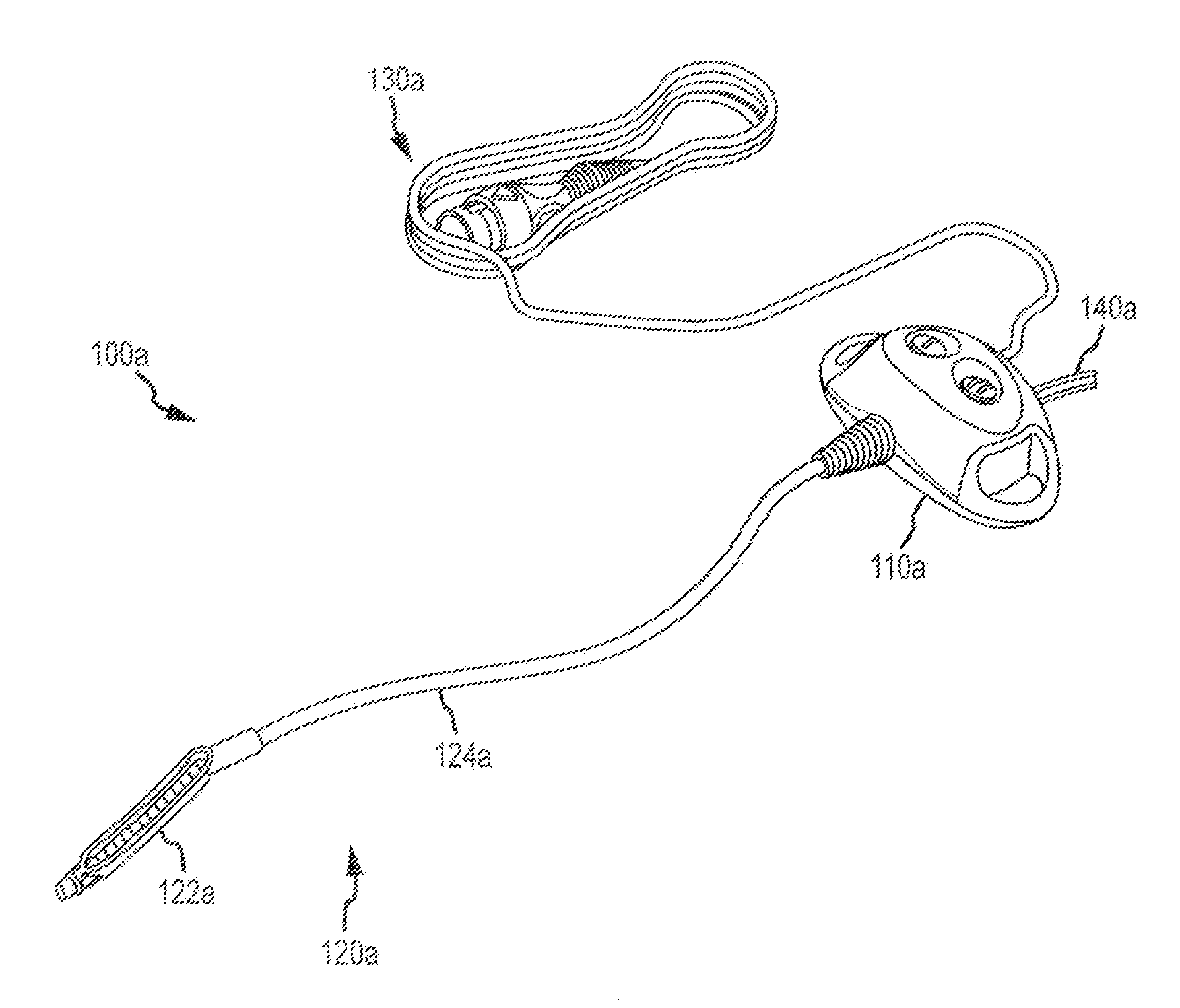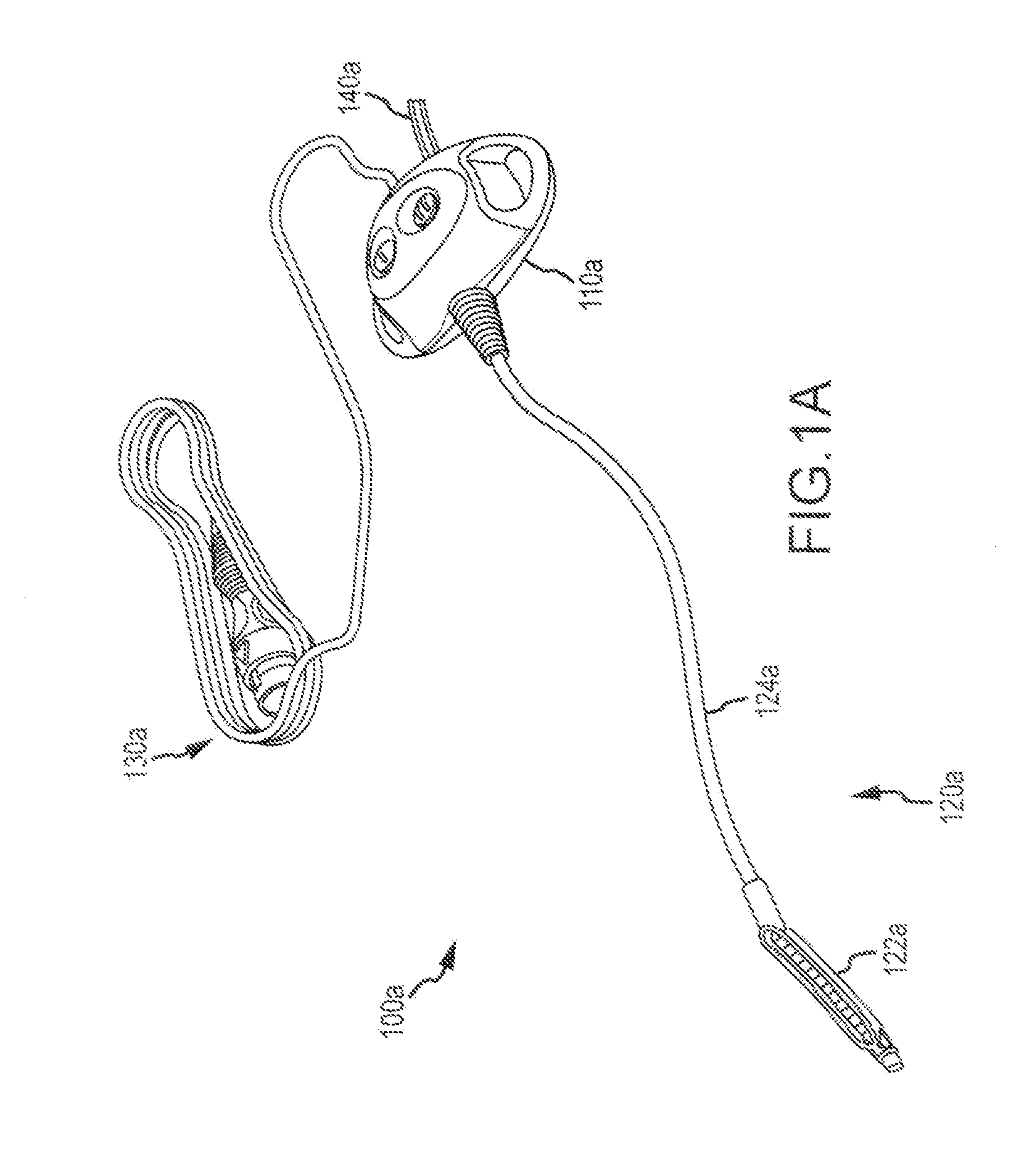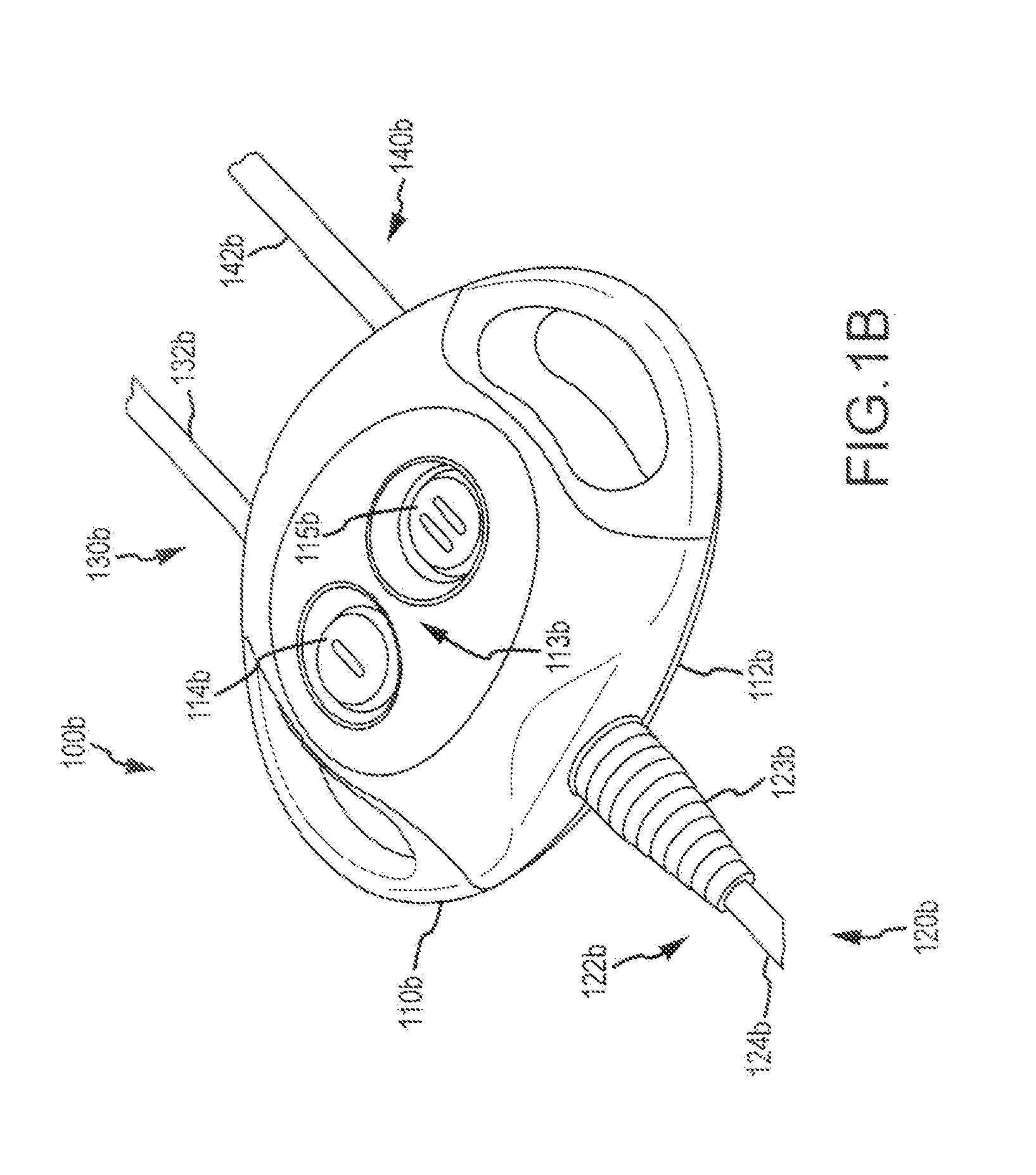Stabilized ablation systems and methods
a technology of stabilizing ablation and ablation energy, applied in the field of medical devices and methods, can solve the problems of reducing the heart's ability to properly function as a pump, presenting a substantial medical problem to aging populations, and tissue death, and achieve the elimination of tissue gaps and the potential for inadvertent heating or surrounding tissues, and precise ablation energy.
- Summary
- Abstract
- Description
- Claims
- Application Information
AI Technical Summary
Benefits of technology
Problems solved by technology
Method used
Image
Examples
Embodiment Construction
[0057]The subject matter of embodiments of the present invention is described here with specificity to meet statutory requirements, but this description is not necessarily intended to limit the scope of the claims. The claimed subject matter may be embodied in other ways, may include different elements or steps, and may be used in conjunction with other existing or future technologies. This description should not be interpreted as implying any particular order or arrangement among or between various steps or elements except when the order of individual steps or arrangement of elements is explicitly described.
[0058]Embodiments of the present invention encompass systems and methods for the ablation of patient tissue. Exemplary surgical systems can be employed during a treatment or procedure through any of a variety of surgical access modalities, including without limitation sternotomy, thoracotomy, port access, subxiphoid, and the like. According to some embodiments, a treatment metho...
PUM
 Login to View More
Login to View More Abstract
Description
Claims
Application Information
 Login to View More
Login to View More - R&D
- Intellectual Property
- Life Sciences
- Materials
- Tech Scout
- Unparalleled Data Quality
- Higher Quality Content
- 60% Fewer Hallucinations
Browse by: Latest US Patents, China's latest patents, Technical Efficacy Thesaurus, Application Domain, Technology Topic, Popular Technical Reports.
© 2025 PatSnap. All rights reserved.Legal|Privacy policy|Modern Slavery Act Transparency Statement|Sitemap|About US| Contact US: help@patsnap.com



